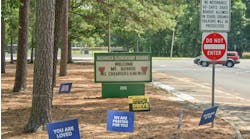When a school or university is dealing with an emergency, communicating to constituents and the public is critical. To get the word out most effectively, administrators must choose methods that deliver information quickly to the greatest numbers of people who need to know.
In the gadget-laden world of 2012, that means education institutions need to be using social media sites such as Facebook and Twitter to communicate important news to students, staff, family members and the community at large.
What issues should schools and universities consider before leaping into the realm of Facebook and Twitter?
The U.S. Department of Education’s Office of Safe and Drug-Free Schools has an online presentation, "Social Media in School Emergency Management," that offers some guidance.
Social media can be used in all four phases of a crisis plan: prevention and mitigation, preparedness, response and recovery. Schools may use social media before, during and after a crisis to "add redundancy to current communications networks, allow for more direct and timely dissemination of information to parents; establish a system of rapid communication to the broader community and the press; and eliminate the press as a filter," the guide states.
For example, during the recovery phase of a crisis, a school could post news about reopening procedures, temporary relocation of programs, crisis counseling availability or information on how community members can assist with recovery.
Before embracing a specific social media platform, school administrators should establish their goals, the guide says: what type of information an education institution wants to disseminate, and what kind of information the school might receive in response.
An institution also needs to determine who will post messages (district level or individual campuses?), and how will crisis-related postings co-exist with non-emergency messages, such as school activities?
Because social media is interactive, education institutions should expect to receive feedback on their posts, so it’s important for a school or university to spell out what online behavior is considered appropriate on a school site and establish the types of comments that are considered appropriate and which may be deleted.
But administrators should avoid the temptation to ignore or disable comments. That could prevent constituents from relaying important information to authorities or school officials, such as undetected problems, holes in information being provided to the public, or relevant real-time information during an unfolding event.
The guide points out several pitfalls that education institutions need to avoid if they want their social media communication to be effective:
•Failing to update content in a timely manner.
•Having content that is not integrated with other school information (which makes it more difficult to attract users to a site when a crisis occurs).
•Failing to update content often enough to be useful to those looking for information.
An education institution needs to make sure that someone is assigned the duty of monitoring comments and postings from its social media followers so that relevant information gets to school administrators and the incident commander during a crisis.
In establishing a Facebook page, Twitter account or other social media presence, institutions must have them up and running before a crisis, so that students, staff and community members can become followers and become accustomed to receiving school-related information from those sources.
That means schools should make an effort to publicize the existence of their social media platforms and make it a valuable resource that constituents will check regularly.

